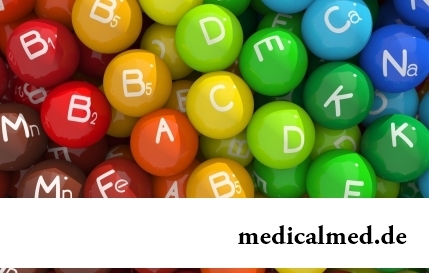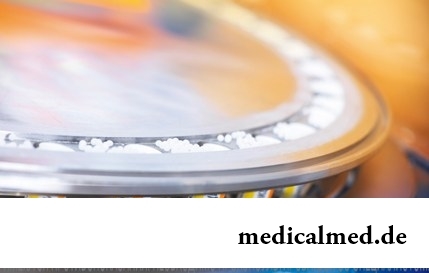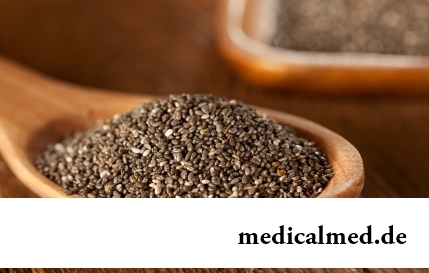





Atropine
Application instruction:
Atropine – cholinolytic drug, a m-holinoretseptorov blocker.
Form of release and structure
Atropine is produced in the following forms:
- Solution for injections with contents in 1 ml 1 mg of Atropini sulfas (in ampoules on 1 ml);
- Eye drops of 1% with contents in 1 ml 10 mg of Atropini sulfas (in polyethylene bottles droppers on 5 ml).
Indications to use
Atropine is anticholinergic and an antispasmodic. Its active agent – poisonous alkaloid which contains in leaves and seeds of plants of family of a nightshade family, such as a henbane, a belladonna, a dope. The main chemical feature of drug consists in its ability to block m-holinoreaktivnye of system of an organism which are located in a cardiac muscle, bodies with smooth muscles, the central nervous system and secretory glands.
Use of Atropine promotes reduction of secretory function of glands, relaxation of a tone of smooth muscle bodies, a mydriasis, increase in intraocular pressure and paralysis of accommodation (ability of an eye to change focal length). Acceleration and initiation of cordial activity after use of medicine is explained by its ability to remove the braking influences of a vagus nerve. Influence of drug on the central nervous system happens in the form of stimulation of a respiratory center, and when using toxic doses perhaps motive and a hyperphrenia (spasms, visual hallucinations).
Atropine is appointed:
- Peptic ulcer of a stomach and 12-perstny gut;
- Spasms of bilious channels, smooth muscle bodies of a GIT, bronchial tubes;
- Hypersalivation (parkinsonism, poisoning with salts of heavy metals, dental interventions);
- Bradycardia;
- Acute pancreatitis;
- Intestinal and renal colic;
- Irritable colon;
- Bronchospasm;
- Bronchitis with hypersecretion;
- AV blockade;
- Laryngospasm;
- Poisoning with antikholinesterazny substances and m cholinomimetics.
Also Atropine is applied when carrying out X-ray inspections of digestive tract, to premedication before surgeries and in ophthalmology (to a mydriasis and achievement of paralysis of accommodation for the purpose of definition of a true refraction of an eye, a research of an eyeground, treatment of a spasm of the central artery of a retina, a keratitis, an iritis, a choroiditis, an iridocyclitis, an embolism and some injuries of an eye).
Contraindications
Use of Atropine is contraindicated at hypersensitivity to the components which are a part of drug.
Route of administration and dosage
Solution for injections
Depending on indications Atropine is entered subcutaneously, intramusculary or intravenously on 0,25-1 mg, frequency rate of use – to 2 times a day.
The adult for elimination of bradycardia intravenously enter 0,5-1 mg, if necessary in 5 minutes repeat administration of drug. The children's dosage is defined by body weight – 0,01 mg/kg.
For premedication Atropine is entered intramusculary in 45-60 minutes prior to anesthesia:
- Adults – on 0,4-0,6 mg;
- Children – on 0,01 mg/kg.
Eye drops
At use of Atropine in ophthalmology 1-2 drops of 1% of solution dig in in a sore eye, frequency rate of use (is defined by indications) – up to 3 times a day with observance of an interval of 5-6 hours. Introduction of 0,1% of solution is in certain cases possible:
- Subkonjyunktivalno – on 0,2-0,5 ml;
- Parabulbarno – on 0,3-0,5 ml.
For an electrophoresis enter 0,5% Atropine solution from the anode through eyelids.
Side effects
At system use of Atropine can develop:
- Tachycardia;
- Dryness in a mouth;
- Difficulty of an urination;
- Dizziness;
- Lock;
- Photophobia;
- Mydriasis;
- Accommodation paralysis;
- Disturbance of tactile perception.
At use of Atropine at treatment of eye diseases in certain cases can arise:
- Chemosis and hyperemia of an eyeglobe and century;
- Dermahemia century;
- Dryness in a mouth;
- Photophobia;
- Tachycardia.
Special instructions
Atropine should be applied with care at diseases of cardiovascular system at which increase in heart rate is undesirable:
- Tachycardia;
- Ciliary arrhythmia;
- Coronary heart disease;
- Chronic heart failure;
- Arterial hypertension;
- Mitral stenosis.
Also Atropine needs to be applied with care at a thyrotoxicosis, acute bleeding, a reflux esophagitis, the increased body temperature, increase in intraocular pressure, diseases of digestive tract which are followed by impassability, a gestosis, dryness in a mouth, nonspecific ulcer colitis, chronic diseases of lungs, a liver and renal failure, a prostatauxe without obstruction of urinary tract, a myasthenia, cerebral palsy, injury of a brain at children, a Down syndrome.
It is necessary to observe an interval not less than 1 hour between use of antiacid drugs and Atropine.
At parabulbar or subconjunctival administration of drug for the purpose of reduction of tachycardia the patient needs to give Tabulettae Validoli under language.
During treatment by Atropine it is necessary to be careful at occupations potentially dangerous types of activity and when driving motor transport.
Analogs
On the action mechanism analogs of Atropine are: Bellatsekhol, Appamid Plus, Cyclohoney, Tropikamid, Giostsiamin, Midriatsil, Tsikloptik, Midrimaks, Becarbonum.
Terms and storage conditions
Drug is released according to the recipe of the doctor. The Atropine period of validity at a temperature up to 25 °C makes:
- Solution for injections – 5 years;
- Eye drops – 3 years.
The 74-year-old resident of Australia James Harrison became blood donor about 1000 times. It has a rare blood group which antibodies help to survive the newborn with a severe form of anemia. Thus, the Australian saved about two million children.

Weakness of an ankle joint – very widespread problem. Its existence is demonstrated by tendency to a podvorachivaniye of legs п...
Section: Articles about health
Long time antibiotics were considered as a panacea from all diseases and were appointed even at insignificant symptoms of an infection. Even now not everyone knows in what force of antibiotics how and when they should be accepted. Let's discredit 7 popular myths about such drugs...
Section: Articles about health
Reactive pancreatitis - the disease which is characterized by inflammatory process in a pancreas which arises most often because of excess activity of digestive enzymes. It − the emergency state which treatment has to take place in surgical department under control of doctors. The acute inflammation of gland can become the reason of its transition to a chronic form, and also development is purulent - necrotic pancreatitis which the extensive necrosis of fabrics can follow. Zabolev...
Section: Articles about health
Not without reason doctors say that 90% of diseases begin or develop because of misoperation of intestines. Disturbance of its functions связ...
Section: Articles about health
The problem of diagnosis was and remains to one of the most important in medicine. From that, the reason of an indisposition of the patient will be how precisely defined, eventually success of treatment depends. In spite of the fact that the majority of the diagnostic methods applied in about...
Section: Articles about health
We live during an advertizing era. Daily each person receives a solid portion of persuasive councils about what to eat to be healthy and successful. Products about which we will talk today are combined by the following circumstance: all of them are positioned as the most useful and the most suitable for inclusion in a morning meal. Unfortunately, it is not true: these 10 products do not suit for breakfasts at all....
Section: Articles about health
Vitamin complexes belong to the most popular drugs, probably, in our country there is no person who was not hearing about a floor...
Section: Articles about health
Modern footwear is extremely various. It stopped being only protection for legs long ago. Today shoes, boots, barefoot persons choose not so much proceeding from their convenience and functionality how many being guided by outward, brand and an opportunity to add with it...
Section: Articles about health
There is a lot of fans of beer in our country. Statistically, on each average Russian (including women and children) in a year about 60 liters of this drink are consumed. It is not a lot of, as in the Czech Republic or Germany, but figure all the same impressive. There is nothing to rejoice here: despite assurances of producers that beer is absolutely harmless, effects of its active consumption cannot be considered positive in any way. Here only part of that negative impact, which popular нап...
Section: Articles about health
Extracorporal fertilization – one of the most modern methods of controlling with infertility. So far it already helped znach...
Section: Articles about health
Bathing in broths of medical flowers and plants (phytobathtub) was eurysynusic since Cleopatra who is a good judge in all that concerns beauty and health. And today phytobathtubs is the simple and available means allowing not only to remove nervous N...
Section: Articles about health
For the person who daily since morning gathers for work it is very important to wake up vigorous and ready by day of work. Actually, each of us experiences difficulties with this, at first sight, simple business from time to time. After night rest exert impact on a condition of an organism the weather which collected for several days fatigue, household and office problems, quality of a dream and many other factors....
Section: Articles about health
You are office worker, the driver, the fan of winter sports or do not think of life without bicycle? You conduct a slow-moving image жизн...
Section: Articles about health
One of the useful properties presented to the person by the nature is ability to feel fear. This ability is designed to signal about approach of a dangerous situation and to help to avoid in advance it to keep life. However if the fear is persuasive and not about...
Section: Articles about health
Any of us is not insured from a heavy illness of the loved one. Happens and so that someone from family members becomes the bed patient, and remains in such state for a long time. It extremely suppresses both the most injured, and all its house which life considerably changes....
Section: Articles about health
History of mankind contains several tens of epidemics whose emergence was compared by eyewitnesses and historians to doomsday. With...
Section: Articles about health
Separate food - the system of meal based on digestion physiology which is carried to improvement methods. According to nutritionists, the separate use of the carbohydrate and proteinaceous products demanding different conditions of assimilation helps to get rid from Bol...
Section: Articles about health
In consciousness of our many compatriots idea that folk remedies if are no more effective, than medicinal "chemistry" strongly took roots, then are precisely less harmful. Unfortunately, it is not always fair: some methods of treatment consecrated with "century national experience" can work so on the patient that it will need urgent intervention of physicians....
Section: Articles about health
What will only not be thought up by persons interested to have a beautiful figure. Here the last innovation – for weight loss needs to be eaten greasy food. Give ра...
Section: Slideshow
Among a set of the perfumery and cosmetic goods which are released today the special group is made by the means containing antibacterial components. Such types of gels, shampoos, soaps, creams, lotions and other products are positioned by manufacturers as a panacea...
Section: Articles about health
For the help to doctors in the choice of optimal solutions for treatment of various diseases the Cochrane scientific organization (Cochrane) conducts joint researches with representatives of scientific community around the world. The analysis of a series of the conducted researches of the drug Oscillococcinum® relating to group of cold remedies became one of the last methanolyses....
Section: Articles about health
Since the moment when the child becomes a school student, his sight begins to be exposed to the strengthened loadings which are supplemented viewing...
Section: Articles about health
The chia plant, or the Spanish sage, is from South America. The indigenous people of the continent since ancient times used its seeds in food: small, but very nutritious kernels, in a form the reminding fasolina. Indians knew about useful properties of seeds of a chia, and applied...
Section: Articles about health
It would seem, about it there can be no disagreements: water is necessary for a human body for normal life activity, and about how and when it should be drunk, all know. It turned out that the situation is not absolutely so: for many years there are very persistent delusions connected with this question. Let's consider the most widespread of them....
Section: Articles about health
From the failure of work of immune system which is shown in the form of an allergy, statistically, more than 40% of the population of the globe suffer. In большинс...
Section: Articles about health
The main role in development of a peptic ulcer of a stomach and duodenum the bacterium Helikobakter plays pilor. Activity and the strengthened reproduction of this microorganism lead to weakening of protection of mucous membranes and their erosive damage. Manifestations not...
Section: Articles about health
What woman does not dream of a beautiful and thick hair? While physicians developed difficult schemes on hair transplant, in the industry of hairdresser's art a few years ago there was a sensation – methods of hair extension appeared. It would seem, dreams came true: though the procedure of building also does not belong to the category cheap, practically any woman can increase several times the volume of hair, change their length and color – generally, to become the real beauty queen....
Section: Articles about health
